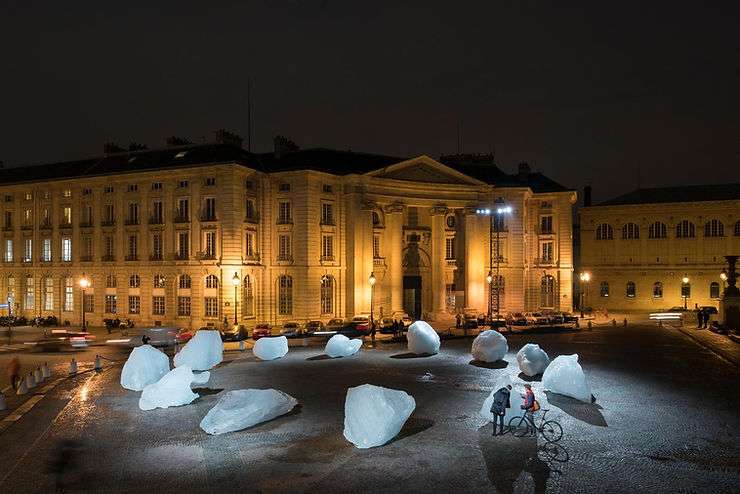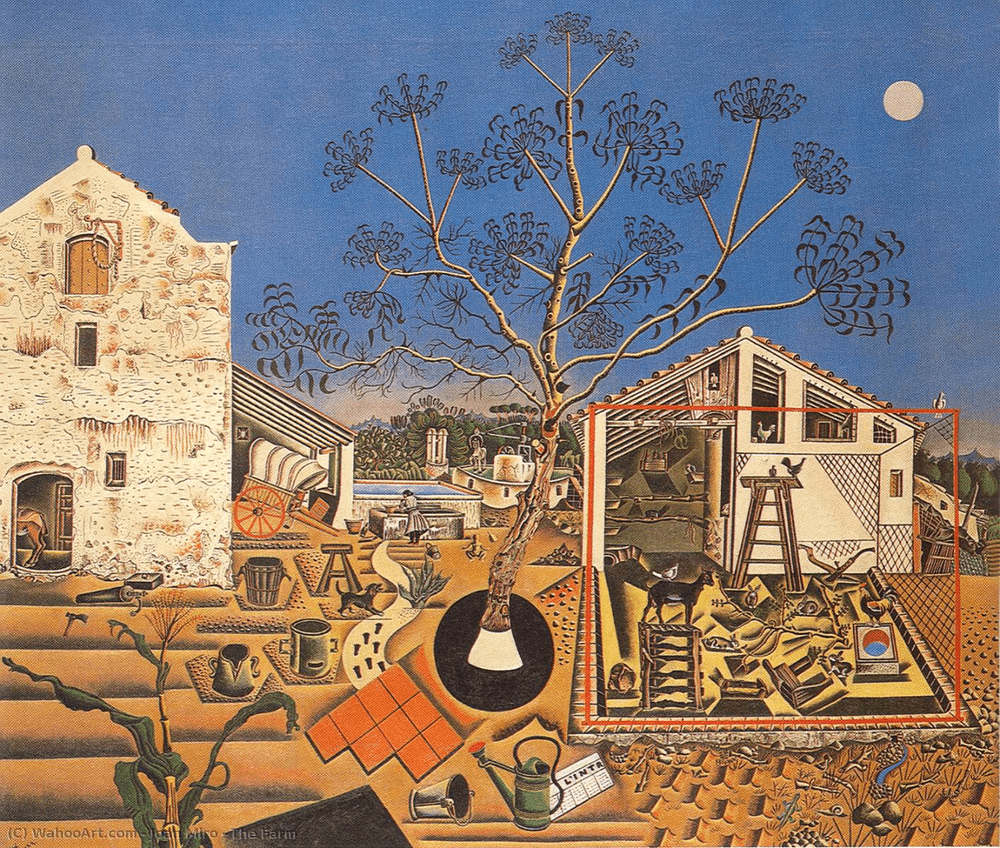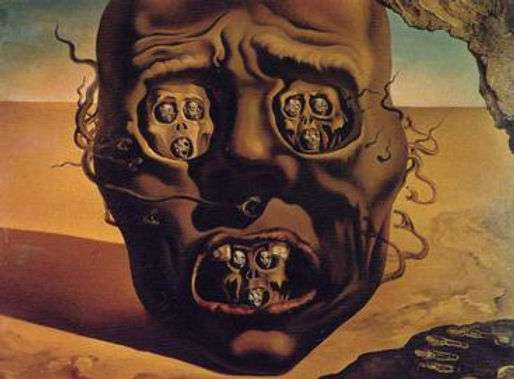“Art has its own power in the world, and is as much a force in the power play of global politics today as it once was in the arena of cold war politics.” – Boris Groys
2020 saw painters, illustrators, graffiti artists, designers, film-makers, photographers, fashion designers, and artists across disciplines use their voices in the fight for democracy.
As Jenny Holzer opened her 2019 show titled “Vigil” at The Rockefeller Centre in New York. The city was bathed in her signature text projections from her project “bullets into bells”, a compilation of citizens responses to gun violence, poems by teens who grew up in the shadows of mass shootings, and stories of reflections on the effects of the flimsy gun laws in the USA.
It’s not unknown for artists to engage as conduits of the truth and to shed light on silenced issues from around the world. Its popularity can be seen in the creation of “Protest Art” becoming a label of production in the arts.
As we look back at this rollercoaster year, let us explore the artists, movements and collectives that fought to bring light to the many global events of 2020.
Artists for Democracy
The fight for democracy is one that artists base their practices on. For if freedom of speech and thought ceased to exist where would these voices go?
The previous year saw prominent museums, galleries and institutions acknowledge their negligent programming, lack of financial transparency, and stringent labour laws.
If 2020 was a mood, artists just weren’t having it.
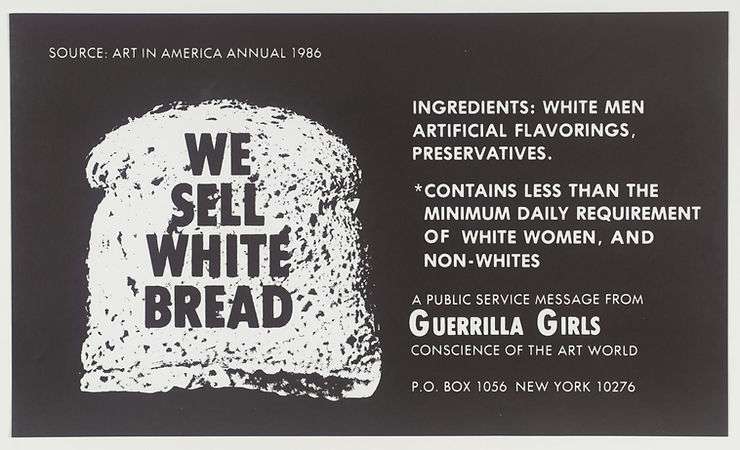
The pandemic saw artists and activists come together to raise funds for at-risk health officials and create bodies of work that spoke of the strangeness of isolation, while many offered a ray of hope that brought people together creatively and collaboratively. Magnum Photos collaborated with National Geographic to bring us a global view of how the coronavirus affected photographers from around the world. Netflix brought us “Homemade”, an anthology series in the form of short films produced by filmmakers from around the world. So it’s safe to say that come hell or high water, creativity never stops.
Sudan Rising
A rising trend from 2019 was the photograph of a veiled fedaya (the large-circular earrings are traditional Sudanese gold earrings that are passed down to women by their mothers) adorned woman atop the hood of a car, addressing a congregation of protestors opposing the military authority of the Transitional Military Council responsible for the massacre of a sit-in-protest to depose the 30-year reign of President Omar al-Bashir.
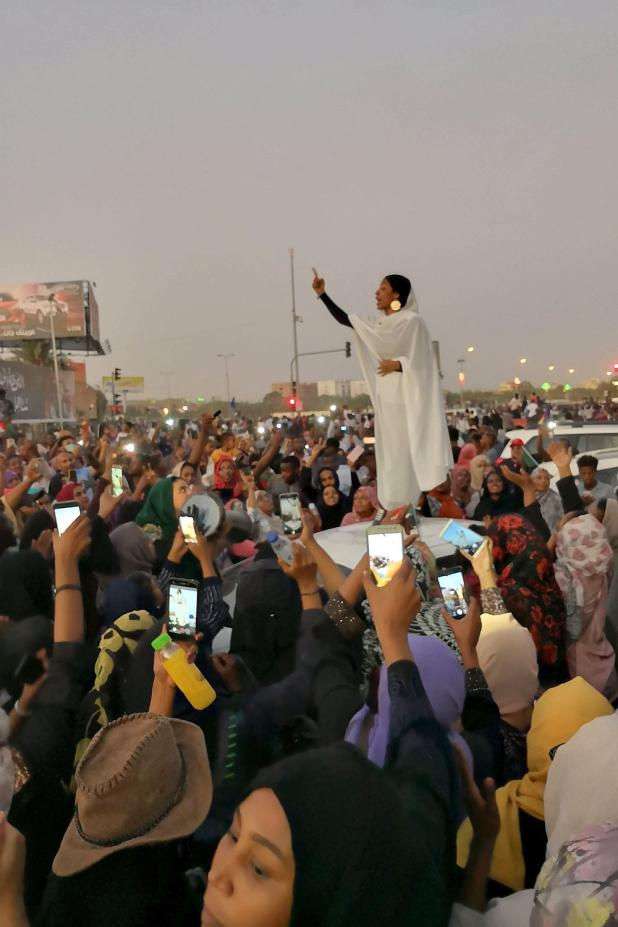
The picture became an iconic moment in the uprising that catapulted its urgency through the proliferation of the same image that appeared in papers globally, now, in a variety of styles. Illustrators and designers ran prints that immortalised her on our screens and in many homes. An untitled mural was created by a group called “Kash Malek”, a civil society organisation in Syria whose focus is supplying humanitarian aid and services throughout Syria.
The group’s latest project “Syrian Banksy” began taking inspiration from its eponymous influence – graffiti artist Banksy. In order to amplify the voices coming out of Syria and to highlight and respond to similar global current events in their fight towards democracy, the project began a revolution after a group of young school children began painting graffiti on the streets. The domino effect of Protest Art can be seen in how its style is dominant amongst cultures regardless of its geographical boundaries.
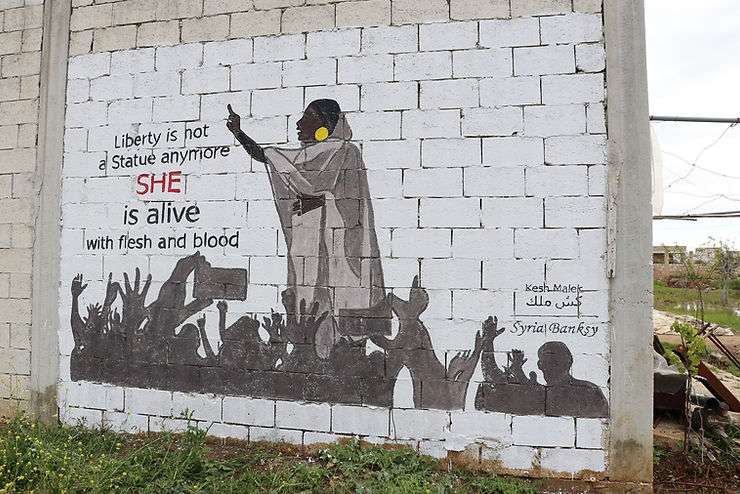
For ages, artists have found inspiration in voicing and unearthing experiences that would otherwise be muffled, and in their own flamboyant way making sure their messages shine through. Whether it’s the words of wisdom that the world seems to be forgetting or words of haste that are spoken as a reminder, this is where we see the power of medium, scale, and creativity come into play.
An artist who has continuously made speaking out a part of her practice and coined the now-famous phrase “A little knowledge goes a long way”, is Jenny Holzer. Her texts that once began as posters stuck on the walls of institutions, address oppression, gender, sexuality, greed, power, and war. Her latest show opened at the beginning of 2020 and was titled “A Little Knowledge”. It presented works that span the artist’s practice of displaying texts on stone benches, LED’s and paintings, reminding us of texts that seem more relevant than ever in the growing climate of political tension and revolution.
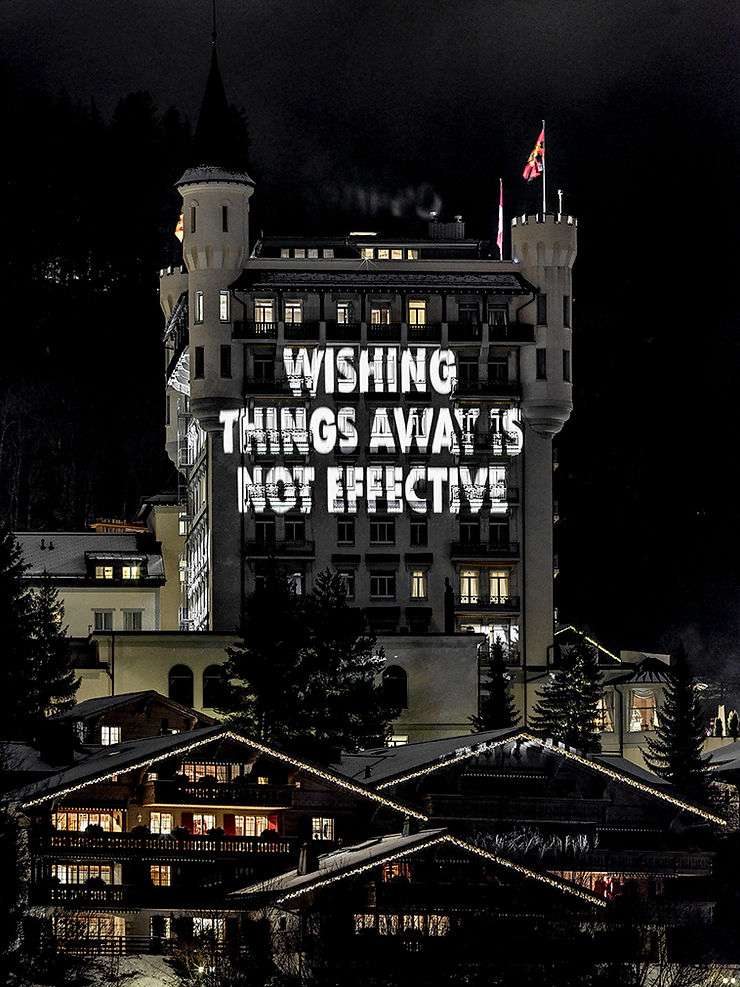
US Presidential Elections 2020
During the run-up to the much-debated 2020 US Elections, former President of the United States- Donald Trump refused to increase funds towards the Coronavirus Relief Bill if it meant increasing funds for the Postal Service that would expand universal in-mail voting. His decision was a pushback to the Democratic Party’s suggestions to allow votes to be cast by mail as many people would not be able to travel to vote due to the coronavirus pandemic.
Many states – important in deciding the fate of the US elections, like as Arizona, Florida, Michigan, Pennsylvania, and Wisconsin– did not have the funds to ensure that each vote that was sent would be counted, especially through mail services. In order to ensure each voice was fairly represented in the fight for a fair count, more than 150 prominent American photographers and artists came together to raise funds at a five-day print sale called “States Of Change.”
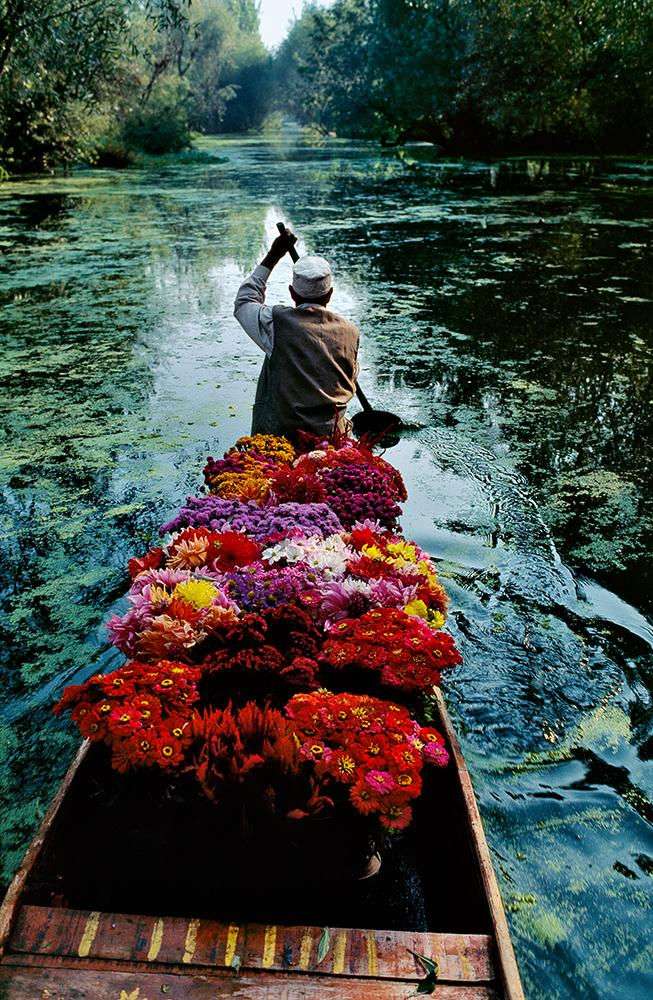
Artist Stallworth’s Nan Goldin, Cindy Sherman, Ed Ruscha, Alfredo Jaar, Steve McCurry amongst others together to tackle the campaign against voter suppression by selling prints of their work, inspired by the funds collected by artists for hospitals and AHS health workers who were most affected by the pandemic.
“I am a Voter”, saw artists come together to reimagine the stickers that were given to a large number of voters who due to the corona pandemic, had sent their votes by mail.
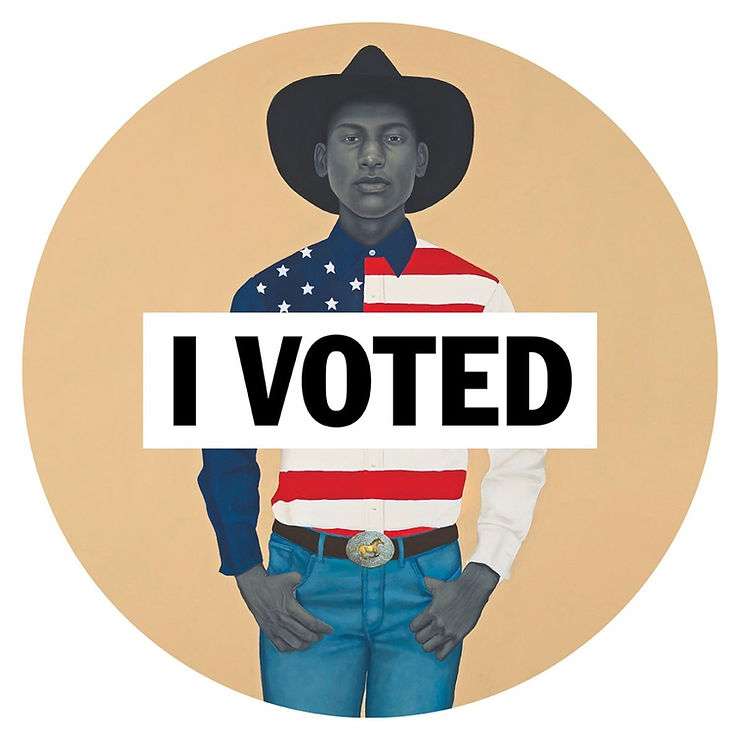
New York Magazine enlisted 48 artists to create “I voted” stickers for those who missed out on receiving theirs upon casting their vote. Artists like Barbara Kruger, Christine Kim Sun, Lorna Simpsons and Amy Sherald (among others) redesigned these stickers to gift to those who performed their civic duty.
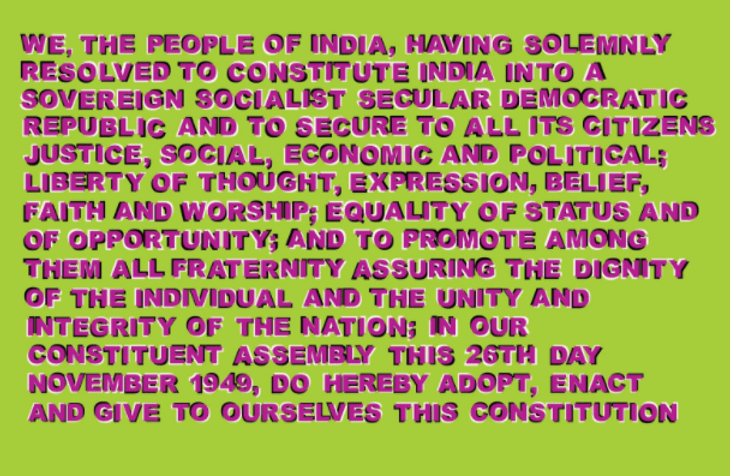
Anti CAA & NRC Protest & Shaheen Bagh
The streets of Shaheen Bagh held one of the most powerful protests that India has seen in its history, led by the spirit and courage of its women that fought against the Citizen Amendment Act and the NRC protest across India. The protest’s unique momentum saw its influences with TIME magazine announcing 82-year old anti-Citizenship amendment Act protestor, Shaheen Bagh’s Bilki on their list of “The 100 Most Influential People of 2020”.
With the scent of revolution so close to home artists in India reacted, responded, and created fighting to keep the spirit of democracy alive.
The 2020 India Art Fair saw artists coming together to ensure that the voices of those fighting for ours were not missed.
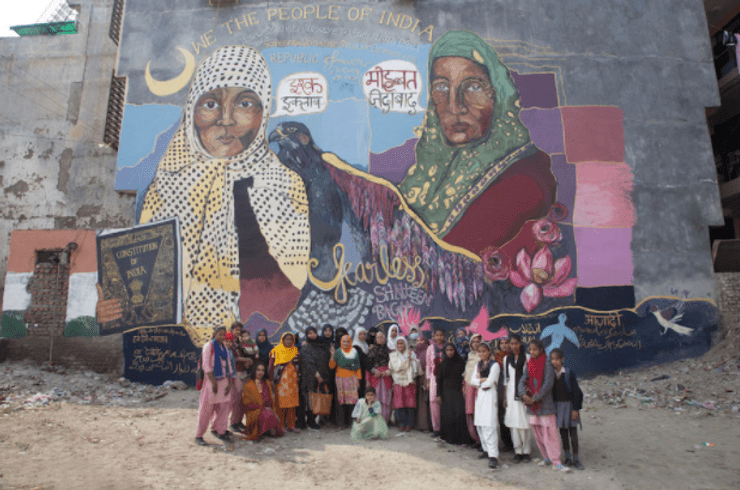
The Fearless Collective, founded by Shilo Shiv Suleman consists of artists, activists, photographers, and filmmakers that use art to redefine fear and femininity using their voice to speak out against a number of issues such as gender violence, marginalised voices, and the fearlessness of love, painted the walls with beautiful murals that articulated the beauty, dignity and strength of the protestors.
Suleman herself was a represented artist at The India Art Fair 2020 that saw her powerful graffiti written on the walls reading a powerful dictation of the Urdu translations of her name and those are carried in her lineage as a plea in remembrance of the unity and secularism that India stands for.
As the India Art Fair was held 45 days into the protest, artists used their work as support in protest, extending the power to the white walls that they were enclosed in.
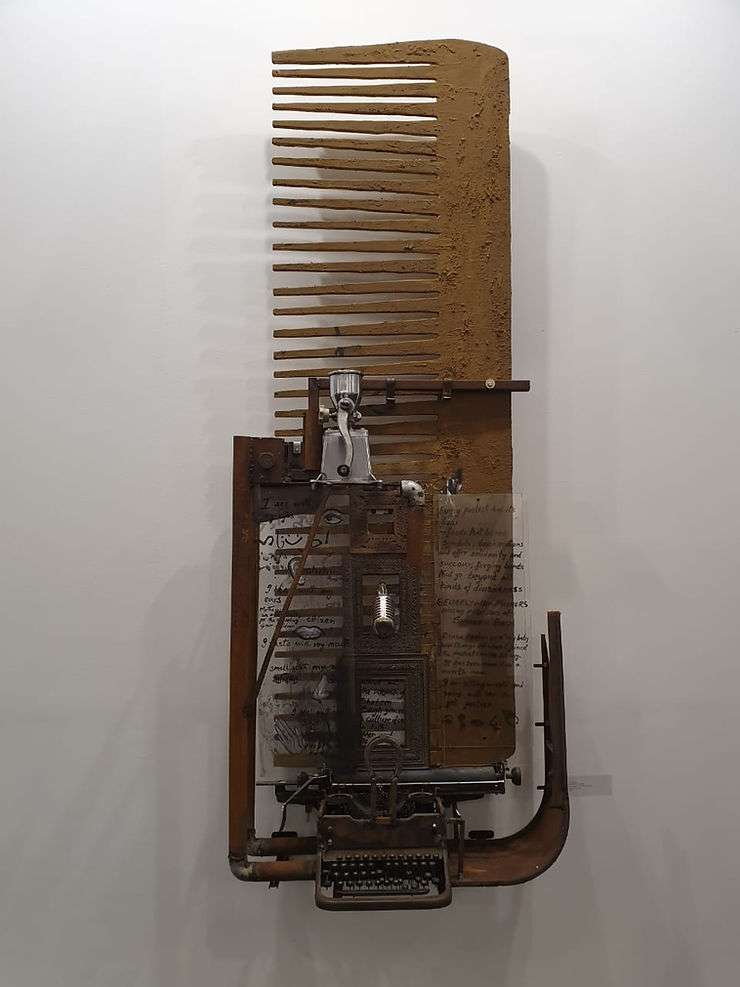
Artist Probir Gupta’s mixed media work titled, “A Poem of Instruments”, was created in dedication of the brave women of Shaheen Bagh who bustled through the cold months of February.
Consisting of a typewriter, mixer grinder, comb, and microphone, Gupta selected each piece themed to the symbols that forge bonds in moments of solidarity and succor, that go beyond all kinds of divisiveness, he writes in his work.
“A microphone to unite the voices, ink to transcribe these voices, and then put them in writing on placards and on walls.”
Covid- 19 Pandemic & Funds for Migrant Workers
The pandemic transformed 2020 within the first months of its arrival. Quarantined safely at home, many of us revealed in the free time we now had to spend with our families. A boon to many was also a curse to a large demographic of India’s migrating population that traveled in search of a stable income. Driven out from their homes, many were left without a job, forced to return to a place they vaguely remember as home.
As the pandemic grew stronger, countries around the world locked down their streets and summoned everyone to stay behind closed doors.
2020 saw strength, resilience and solidarity come together in a concoction of tears and smiles as Covid-19 overturned everything that was known and created a vastness of the unknown.
As the pandemic left no country amiss, several artists spent their time volunteering at kitchens to serve the elderly that were unable to leave their homes, many curated shows on street curbs, many made short films taped in their homes as collecting art supplies was a daily walk that couldn’t be taken anymore.
‘Buy a plate, fill a plate.’
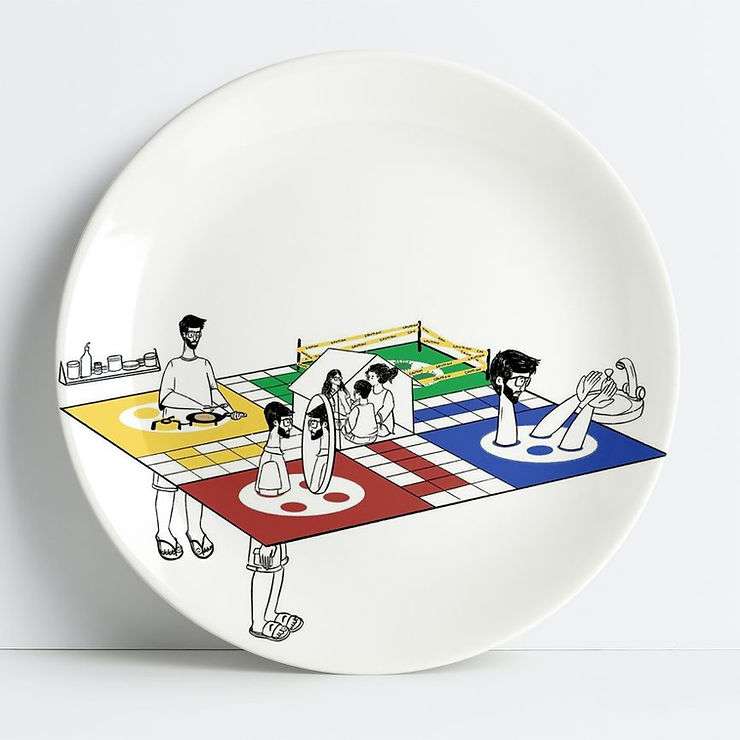
The Plated Project Started by Chlorophyll Innovation lab, a Mumbai-based collective started this initiative to raise funds through the sales of limited-edition curated art by illustrators, artists and designers from around the world each creating a piece of work in their signature styles. The Plated Project brought together 20 leading global artists from across 10 countries to create “A Plate full of Hope”.
Not only was the initiative a way to provide food to those that were displaced and in need of support, but also brought issues of hunger to the forefront. With artists using their palate to color the sales of The Plated Project, it was the sense of community and creativity that made this possible.
Artists, curators and creatives played their part to raise funds for a number of issues that needed support in the whirlwind of 2020, Shaleen Wadhwana, curator and art academician lent her expertise in support of Goonj’s, an NGO based out of New Delhi, many relief campaigns, offering to review the work of emerging and aspiring art practitioners.
Coronation

The onset of the Covid-19 pandemic was traced to the first sighting of the virus in Wuhan, China. China saw itself thrown into a draconian lockdown that left the streets empty. Months after the number of cases began to rapidly reduce at the epicenter of the pandemic – Ai Wei Wei, artist, critic, and filmmaker, released his documentary film “Coronation”. Nearly 500 hours of documented footage captured by over a dozen volunteers was compressed into the 2 hour documentary that observed the militarised and brute nature of the government enforced quarantine.
Ai Wei Wei is known as the exiled artist, who after spending three years in Berlin, currently resides in the UK. Directing the entire documentary remotely was his prerogative against the silencing seen so frequently in Chinese authoritarianism.
While the film was set to be released during the Toronto International Film Festival, New York Film Festival, and Venice Film Festival – all three declined to show the documentary due to the political nature of its contents.
A stronger community in the fight for a better future
There is no one incident that occurred in 2020 that demanded importance over the other, to many, this year can be best left undescribed. Incidents such as the explosions in Beirut and the coming together of citizens during #BlackLivesMatter attest to revolutions and disasters that one in hindsight can only say they saw coming from afar. If there is one thing we can identify through these months is that voices have been carried across seas and established that injustices will be known, help will be offered, and art will always stand as an attestation to its power.
The messages that artists hope to convey with their work goes deeper than the style or medium they chose to do it with. It unifies an entire ecosystem of humanity that remains molecular in their being for love has shown us its power to reclaim and rebuild. Whether it’s comedy or cold-facts all we have to do is trust the brush and trust the artist – for their fight has been a continuous part of history and this year has shown us – they aren’t going anywhere.
If you’re looking to read the evolution of art during crises or even unearth the visual treats of historical lockdowns visit the rest of our art-tastic reads on our blog.
